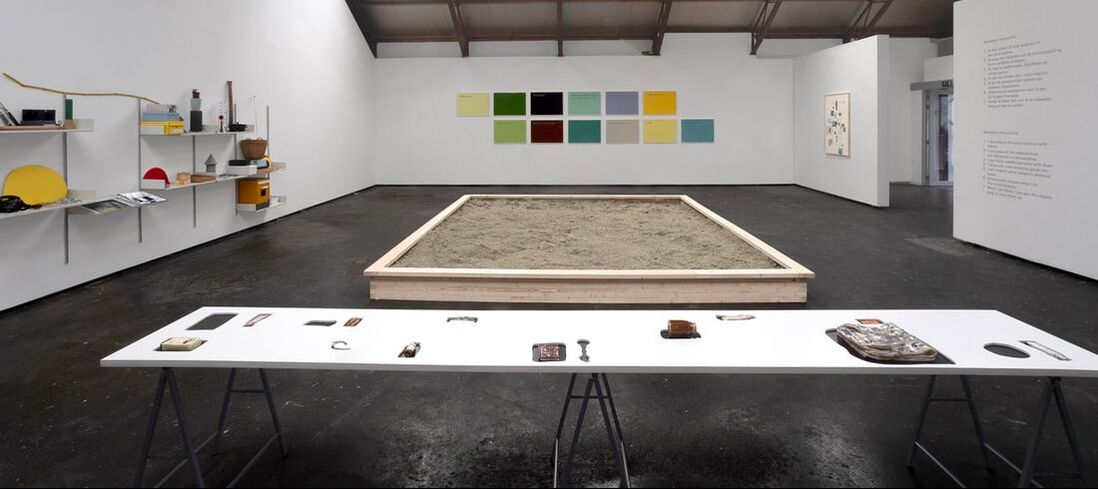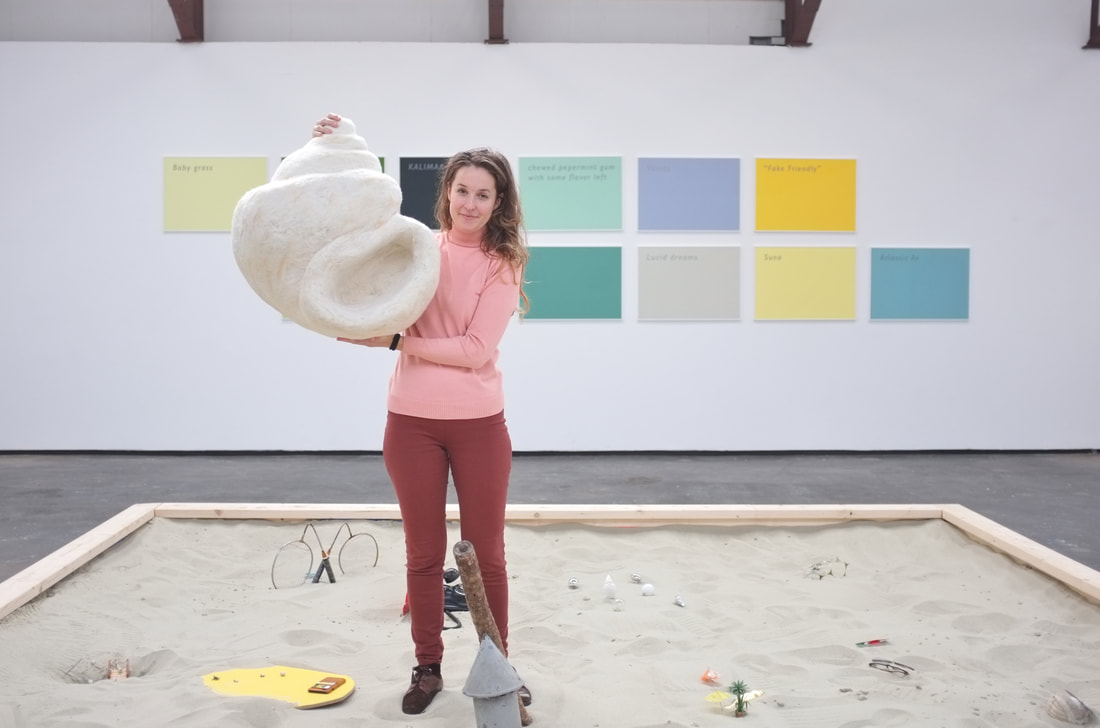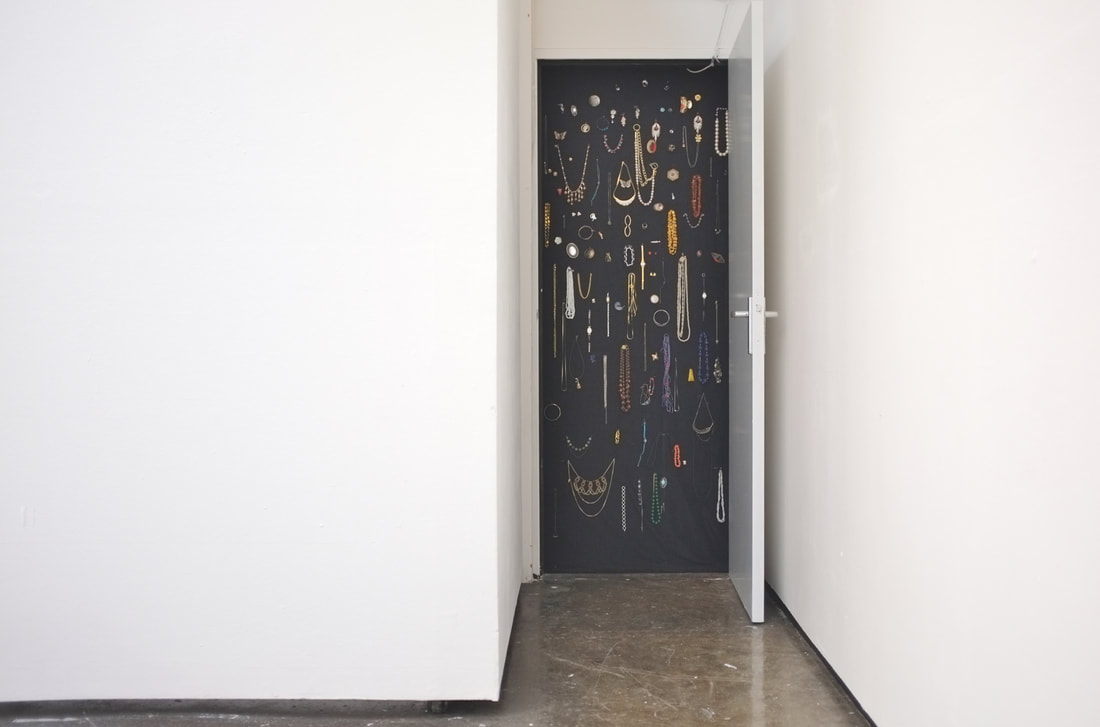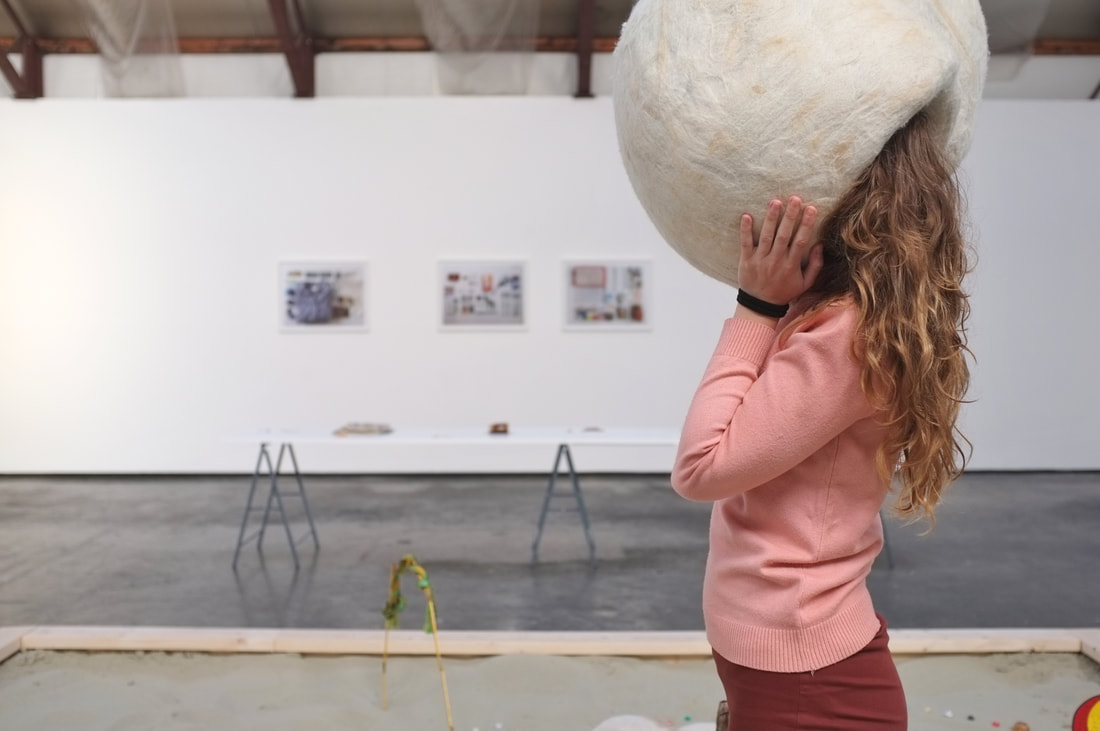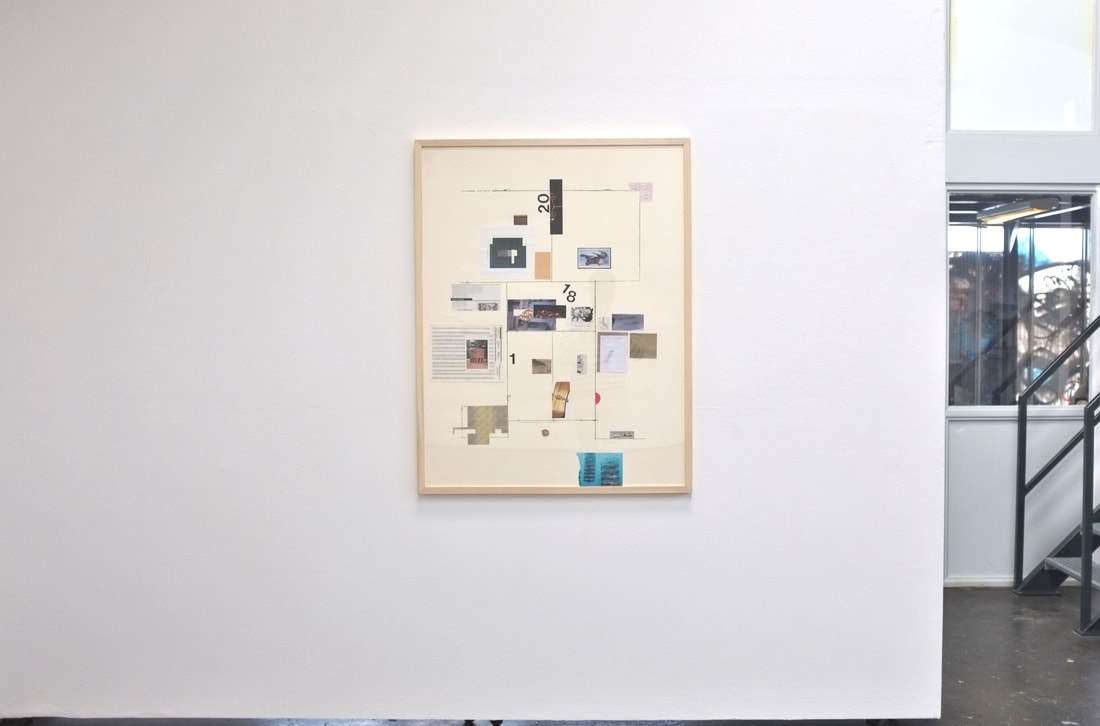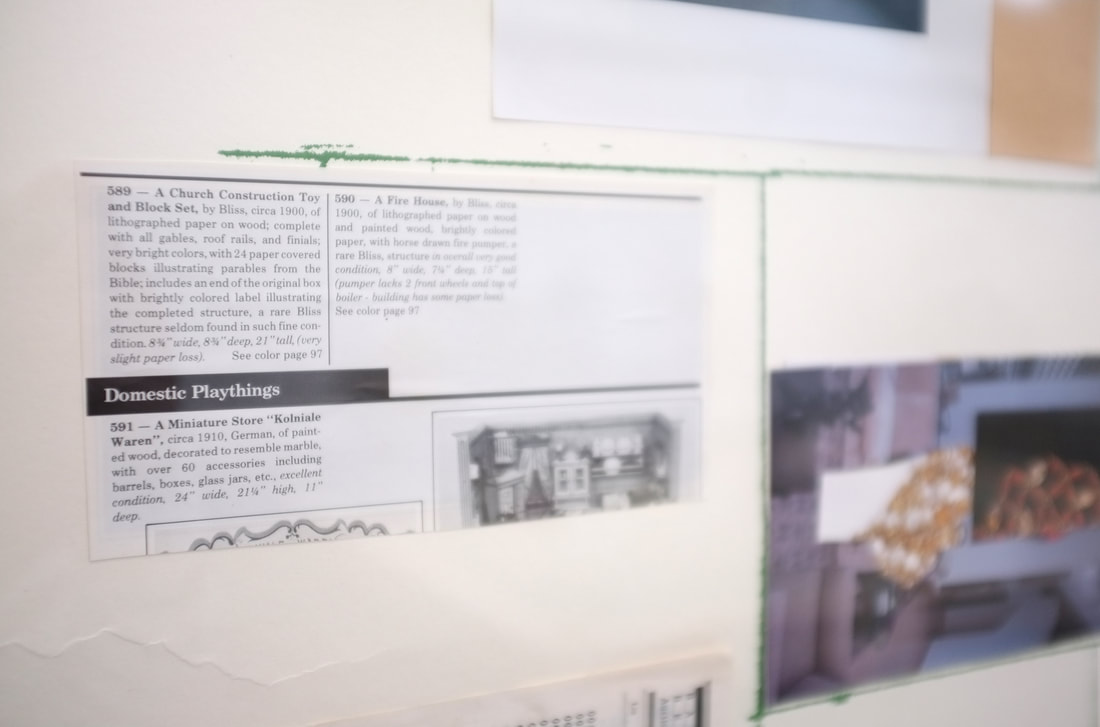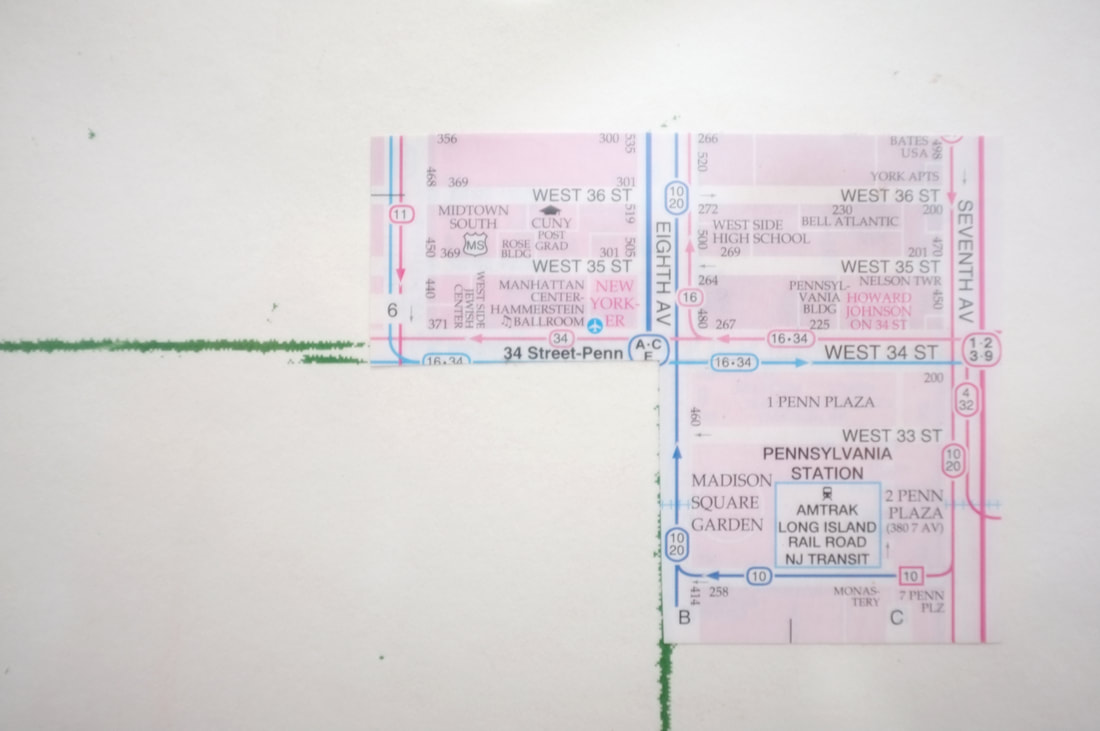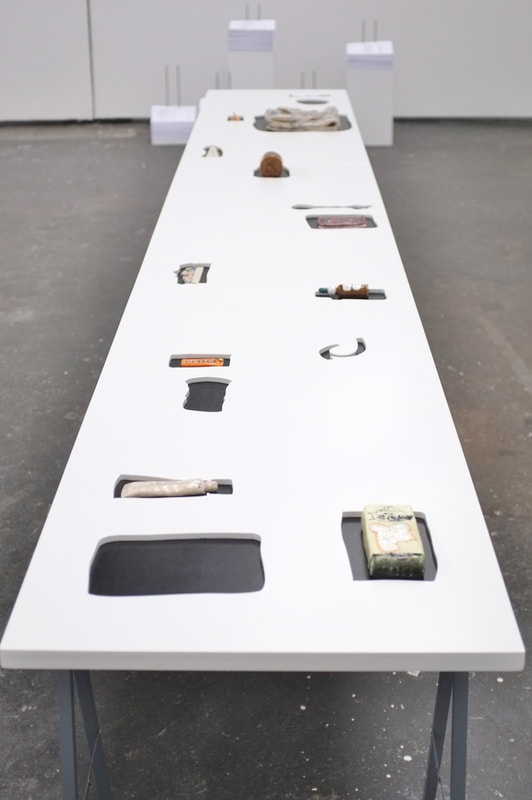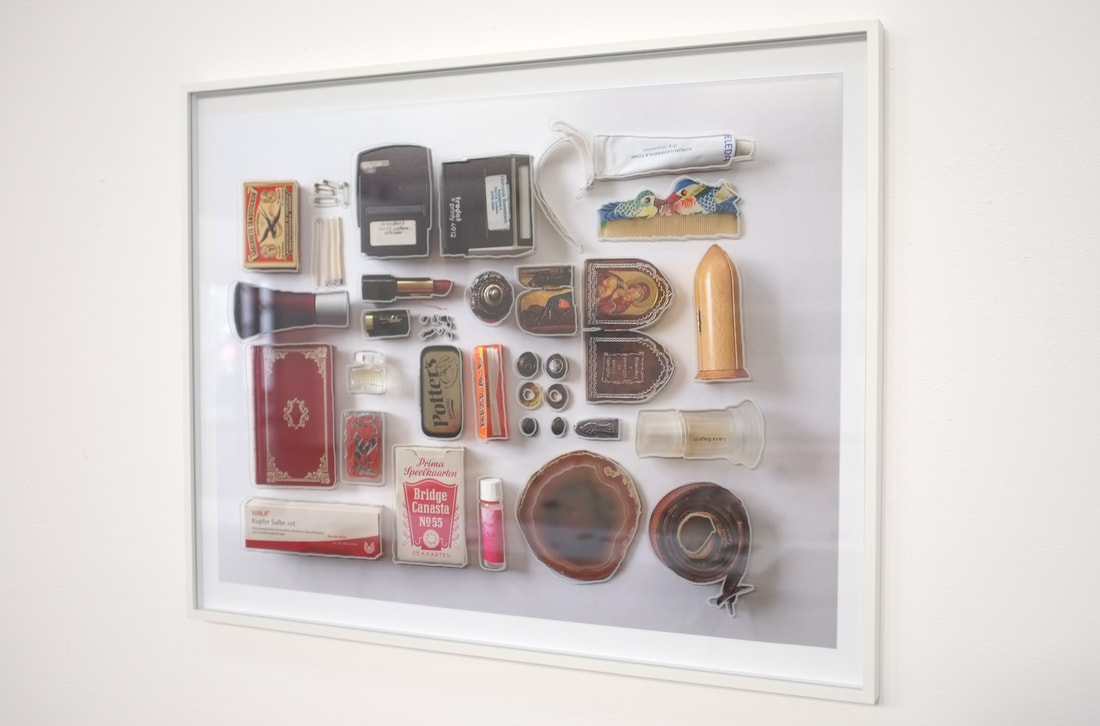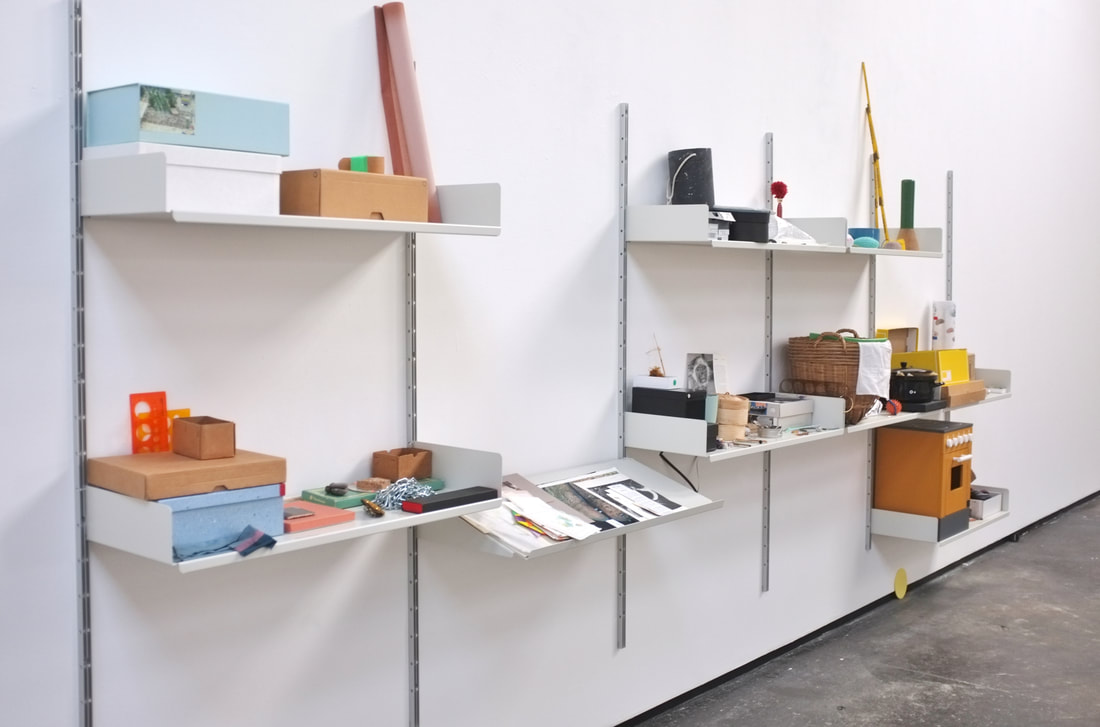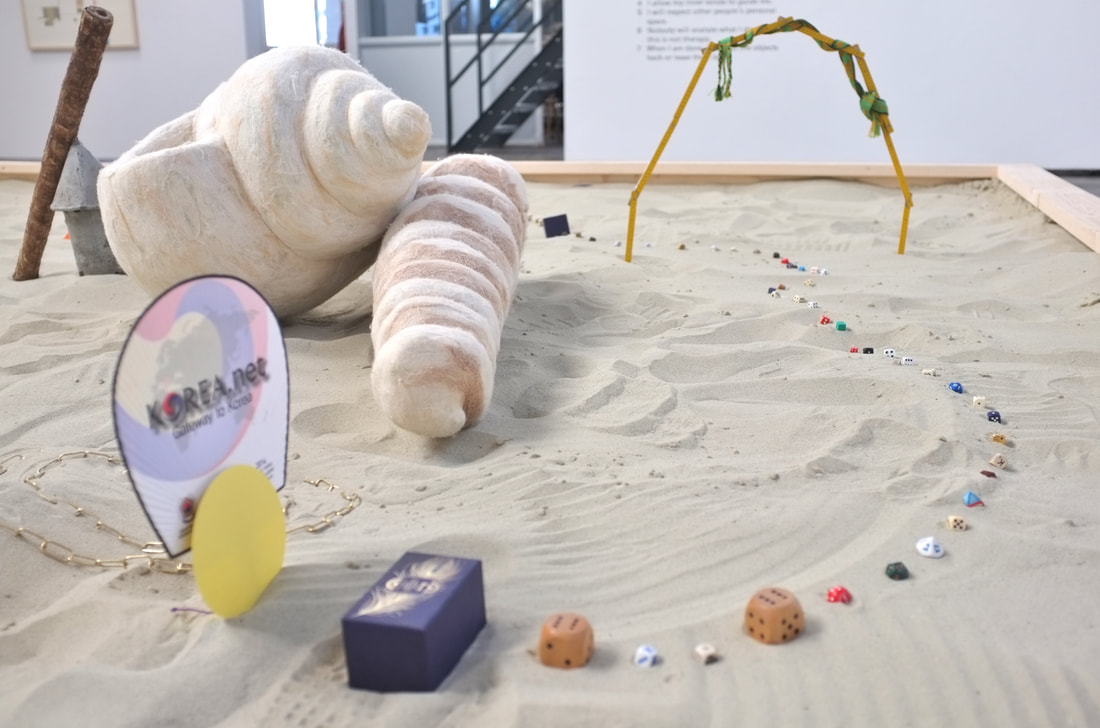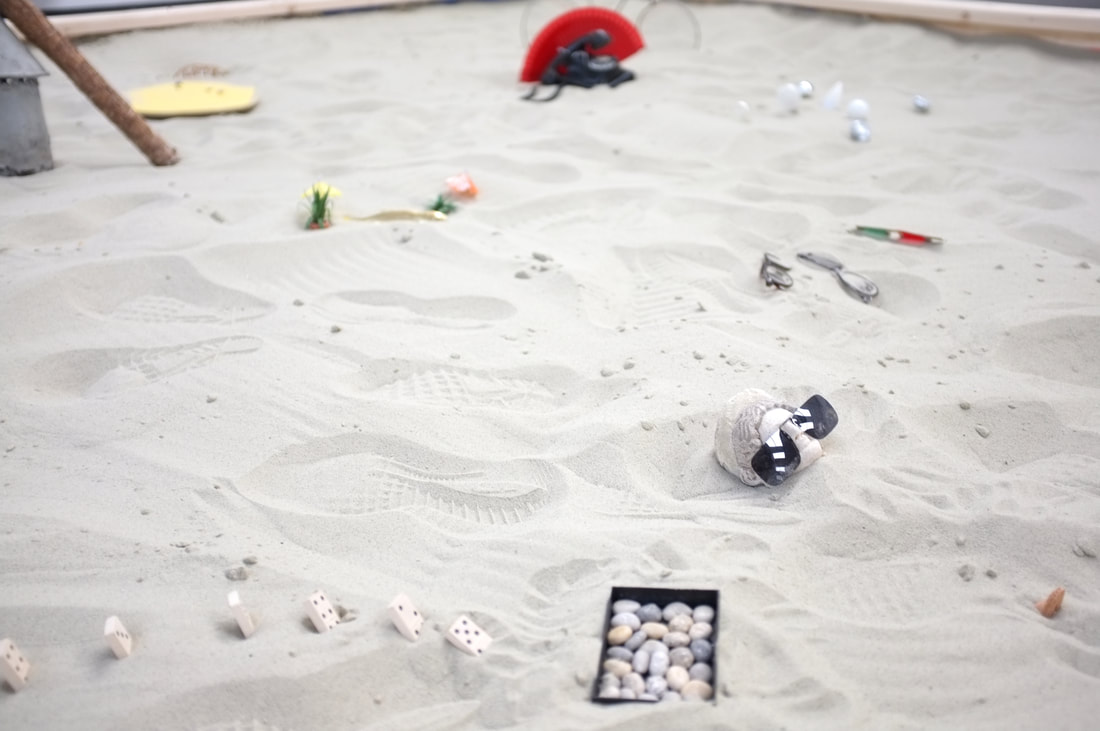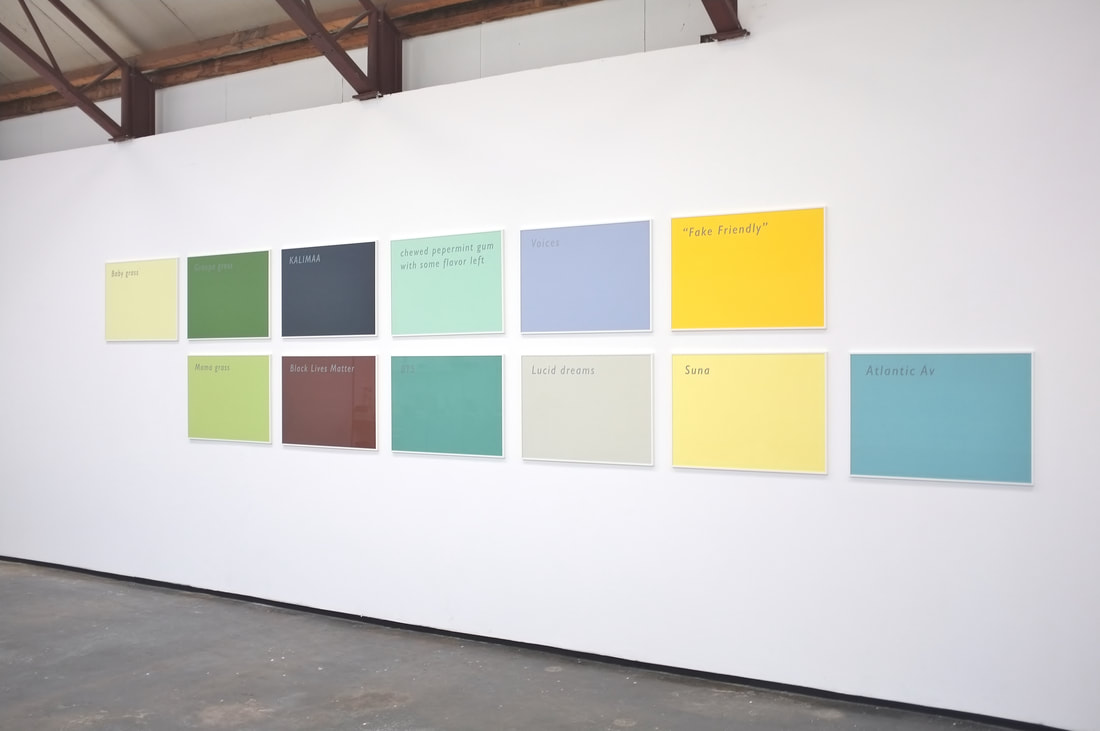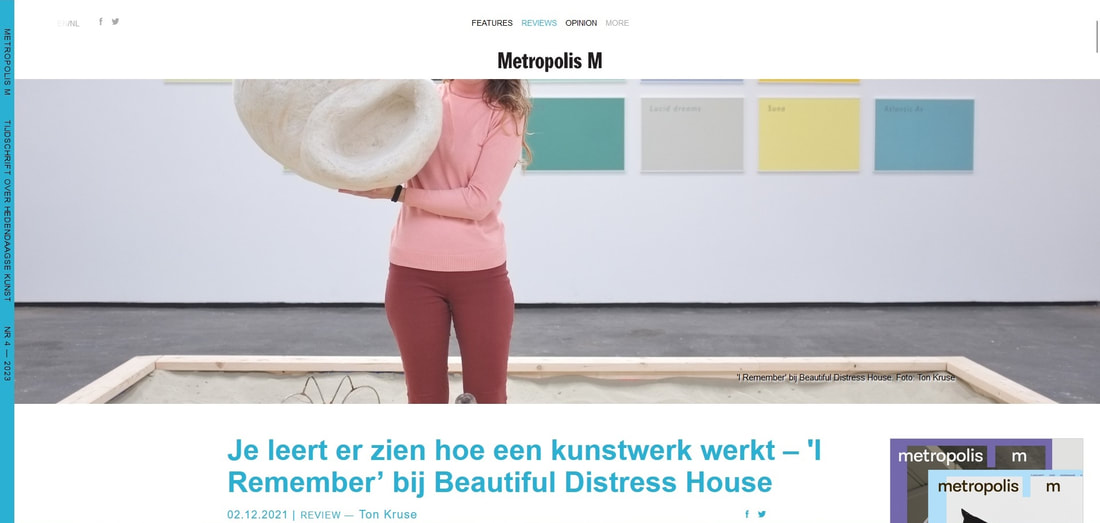I remember: Where art happened and one could learn it
I remember the work of Martín La Roche and Mirthe Berentsen, in the presentation they made with Inez Piso at the Beautiful Distress House.
It was a presentation where art was happening as a process. The work shown was not 'finished'. It was in the process of being done. Nor was the work 'unfinished'. It had a strong, clear form.
I was not surprised that art school teachers took their students to visit the presentation. Not to observe, but to participate in it. Because one learns to see - how a work of art works. A process of forming, of formulation.
A work of art, so I saw, is not carved in stone but is made of sand. Not that it slips through your fingers, mind you. Castles are built and delicious 'cakes' are baked. Depths are being dug, wherein the blue comes to view. But it is not solid and static. It is ever-changing, because it keeps moving you on.
It was a presentation where art was happening as a process. The work shown was not 'finished'. It was in the process of being done. Nor was the work 'unfinished'. It had a strong, clear form.
I was not surprised that art school teachers took their students to visit the presentation. Not to observe, but to participate in it. Because one learns to see - how a work of art works. A process of forming, of formulation.
A work of art, so I saw, is not carved in stone but is made of sand. Not that it slips through your fingers, mind you. Castles are built and delicious 'cakes' are baked. Depths are being dug, wherein the blue comes to view. But it is not solid and static. It is ever-changing, because it keeps moving you on.
Inez Piso, the curator, works just like an artist. I remember she had even added a work of her own to the presentation. From project to project, she builds her knowledge and insights, just like artists do. Constantly seeing how and what it is going to become, and how it can be funded. Or not. First comes the work, everything else is to follow.
Inez is all about conferring meaning through, with and in language-use. How the grammar of a language shapes the structure of one's thinking. Yes, even making it possible or impossible for one to conceive a case. I remember how she told me that there are some words, that cannot be translated. These refer to categories and concepts that are actually ungraspable. That this is where poetry arises from: where a meaning is suspected and circumscribed. Taking on form.
Inez is all about conferring meaning through, with and in language-use. How the grammar of a language shapes the structure of one's thinking. Yes, even making it possible or impossible for one to conceive a case. I remember how she told me that there are some words, that cannot be translated. These refer to categories and concepts that are actually ungraspable. That this is where poetry arises from: where a meaning is suspected and circumscribed. Taking on form.
Inez knew both artists, both of whom did residencies at Kings County Hospital in New York City. I remember a floor plan of Martín La Roche in the presentation. He worked in building T with the psychiatric patients. In building R, he had his studio. From there he went to building A, where he stayed. Every day he followed the route: A, R, T - and back again. On the noticeboard, near building R, he made a new compilation of clippings from art magazines every day. The hospital management thought artists needed such magazines, I remember. That's why they were there.
Mirthe Berentsen got patients at Kings County Hospital writing. She was confronted with the limits of language: patients failed to put into words what they had thought, felt and experienced. A short while later, she herself as a writer, reached the limits of language. She had to first start seeing. And then to sort.
I remember the smartphone photo-compositions by Berentsen. Of objects from her parental home which she had to clear out after her mother's death. One cannot keep a museum of one's own life, one has to choose from treasured objects and move the rest of them to the grey archive... The objects are traced on the glass plate. Because they are really no longer there.
The thing in itself, is often worth almost nothing. It only achieves value by the words that one gives to it. The words, that together give shape to one's memory, but that can only encircle, trace its meaning. The event, the experience to which the object refers is no longer there. There is a limit to language. One cannot relive the remembered event, just re-imagine it. The words take in the place of what happened. Re-member.
I remember the smartphone photo-compositions by Berentsen. Of objects from her parental home which she had to clear out after her mother's death. One cannot keep a museum of one's own life, one has to choose from treasured objects and move the rest of them to the grey archive... The objects are traced on the glass plate. Because they are really no longer there.
The thing in itself, is often worth almost nothing. It only achieves value by the words that one gives to it. The words, that together give shape to one's memory, but that can only encircle, trace its meaning. The event, the experience to which the object refers is no longer there. There is a limit to language. One cannot relive the remembered event, just re-imagine it. The words take in the place of what happened. Re-member.
Do you remember what Aristotle wrote in his Ethica Nicomachea? That one possesses faculties that one can simply exercise without practice. He mentions the senses as an example of such faculties. But there are also faculties that require practice before one can exercise them. He then mentions art as an example, as a blueprint even. You have to learn it first, and only then can one can do it. I remember there was a big sandbox in the middle of the presentation. That's where art happened and one could learn it.
The question now becomes: is remembrance a capacity that one has to learn, or is it a capacity that one can do, 'just like that'? Children can't talk just like that either. They have to learn by listening and practising. Sounds become words. The words refer, signify, and are understood. Understanding is an event in thought. And such an occurrence can be remembered.
In the sandbox here, art happened by remembrance. Martín opened his vast collections of objects. Visitors are asked to describe a memory associated with an object. They then place the object in the sandbox and tell one another about what they remember by it. Then, they are allowed to describe a memory with someone else's memory. The objects in the sandbox now come together, forming a new story without forgetting the former. Suddenly, all things turn out to be about something. The objects speak and signify. Patterns emerge in the sand. (watch the process)
The question now becomes: is remembrance a capacity that one has to learn, or is it a capacity that one can do, 'just like that'? Children can't talk just like that either. They have to learn by listening and practising. Sounds become words. The words refer, signify, and are understood. Understanding is an event in thought. And such an occurrence can be remembered.
In the sandbox here, art happened by remembrance. Martín opened his vast collections of objects. Visitors are asked to describe a memory associated with an object. They then place the object in the sandbox and tell one another about what they remember by it. Then, they are allowed to describe a memory with someone else's memory. The objects in the sandbox now come together, forming a new story without forgetting the former. Suddenly, all things turn out to be about something. The objects speak and signify. Patterns emerge in the sand. (watch the process)
Not only Martin's collections are permitted to go in the sandbox, but also the ceramic and felt objects that Berentsen made. Art is not there to possess or to contemplate, but to engage. To participate in.
Each work of art is like a game. One can participate if one lets the game play you. It's gone if you say: well, it's just a game. But if you stick to its rules, stick with what is at play, you will gain all kinds of experiences. One learns by doing it. And every game is about something, means something. What you have learnt and experienced in the game you will remember. Even when the game itself has already gone, because it is no longer being played.
Each work of art is like a game. One can participate if one lets the game play you. It's gone if you say: well, it's just a game. But if you stick to its rules, stick with what is at play, you will gain all kinds of experiences. One learns by doing it. And every game is about something, means something. What you have learnt and experienced in the game you will remember. Even when the game itself has already gone, because it is no longer being played.
|
02.12.2021- Review Metropolis M - Ton Kruse
|
(Photo 1: courtesey Beautiful Distress)
